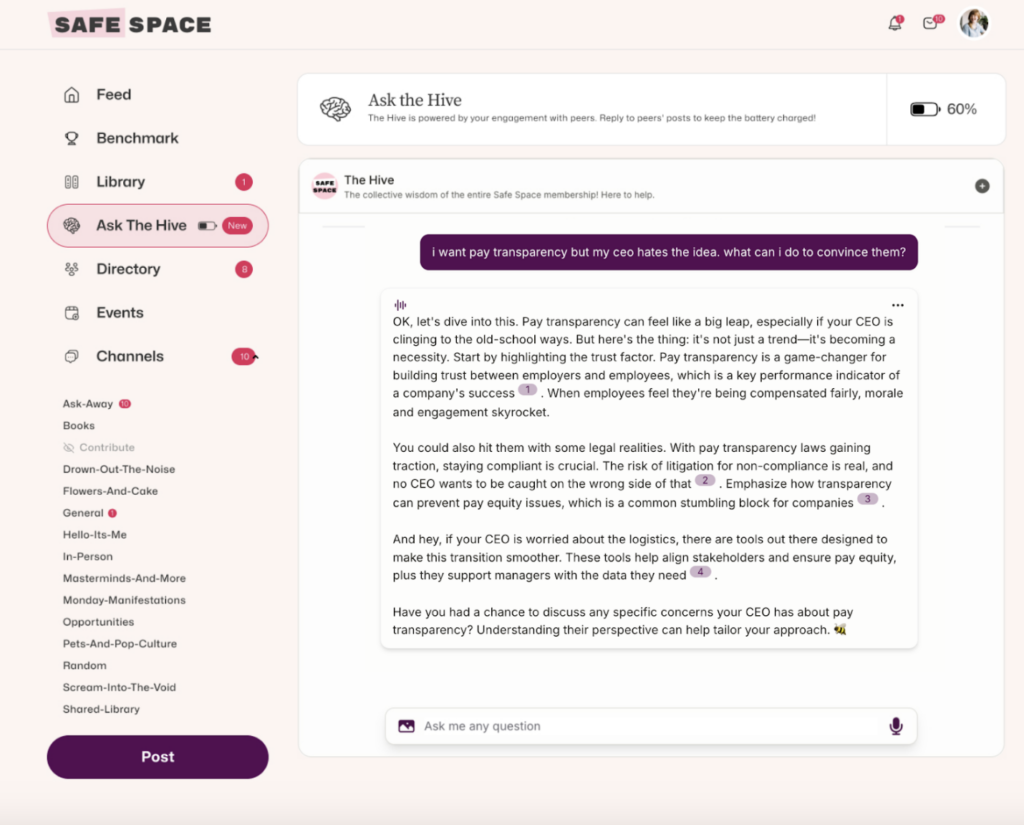
The biggest thing I’ve seen companies get wrong about parental leave? They center the policies around birthing mothers.
While there is no doubt that being a working mother has its difficulties (dove into that last week) focusing parental leave policies on one experience is inequitable.
Not to mention, our concept of what is considered a “family” is outdated and some of our policies at work reflect just that.
And what about queer couples and/or those that pursue adoption, surrogacy or fostering?
Historically parental leave policies fall short when it comes to those circumstances.
We’ve seen the shift from terms like maternity/paternity leave to parental leave which tends to be more inclusive and takes into account anyone who becomes a parent regardless of how.
But our policies are still lacking!
Even though offering parental leave has benefits such as better productivity, and higher retention rates and can even help close the gender wage gap.
Sounds like a win-win??? So how can companies build and implement a policy that supports all parents?
Here are 3 steps you can take to build an inclusive and equitable policy for parental leave.
Step 1: Be inclusive

Historically, parental leave policies have prioritized families that give birth and excluded:
- LGBTQ+ couples
- Transgender or non-binary employees
- Employees experiencing fertility issues
The best way to support expecting parents? Adopt a gender inclusive policy.
Give employees access to the same amount of leave regardless of how the family came together.
Also, consider giving leave to employees who have experienced child loss.
Usually this is wrapped under bereavement rather than parental leave but make sure you offer leave somewhere because somewhere between 10 to 20 percent of known pregnancies end in miscarriages.
FWIW: An inclusive parental leave policy will support your employees which has been known to increase engagement and retention.
JOIN 150K+ HR LEADERS
Get insights, learnings, and advice on how to build companies and cultures that people actually love.
No spam. Unsubscribe any time.
Step 2: Write a better policy

If I had a dollar for every time I asked someone what they did for parental leave and their response was “we have a policy in our handbook.”
That is not enough.
Yes, you need to have a policy to clearly outline for employees what is being offered but oftentimes those policies are lacking.
Some things I’ve seen policies get wrong:
- They’re build for 1 experience and lack consideration for others (see step 1)
- There is a minimum tenure requirement to be eligible
- There is no discussion about how to prepare / return from leave
- They are confusing and wrapped in legal jargon (ugh)
- Don’t give enough time off
- They have classes like primary vs secondary caregivers
5 ways you can improve your parental leave policies:
- Get rid of the minimum tenure requirement to take parental leave. This has been shown to negatively impact women!
- Include an offboarding / onboarding plan. Outline what resources parents will have when offboarding work. Treat your parents like new hires when they return and plan out an onboarding plan for them!
- Train your managers: Ah, yes. My standing advice! Train your managers on how to help their employees take leave, how they plan work and how to handle a return. A supportive manager is a life changing experience! Build this into the policy as a resource to the parents.
- Give more time! 16 weeks has become the gold standard for leave. I know some of you are cringing, that’s so much time! But trust me the payoff is worth it. Giving parents the time to bond with their children and take care of themselves is crucial. Engagement is huge here. You want parents back at work who are engaged, not distracted because they didn’t have enough time.
- Ditch the primary vs secondary caregivers. Bold, I know. But by classifying employees like this we further perpetuate the gender inequality and unpaid work women do. I promise more on this another send!
You’ve decided you must include the points above in your parental leave policy but now have a hurdle: you need buy-in from stakeholders.
I’ll refrain from ranting and instead give you tips for how to get buy-in!
One last note: check out Parentaly’s resources – they have a ton of checklists, sample policies and resources for parental leave!
Step 3: Get buy in from stakeholders

We allll have worked with that CEO or leader that just doesn’t get it or worse doesn’t trust you to make the right decision when it comes to employees or policies. Insert eye roll.
Here’s how to get buy-in on improving your parental leave policy.
Present the benefits:
- A more inclusive and robust parental leave policy has impacts on engagement and retention.
- Encouraging folks (especially fathers) to take leave actually helps promote gender equality by destigmatizing care and domestic work.
- When employees take leave it presents the opportunity to better prioritize work better and create a path to upskill junior employees in their absence. Growth opportunities are consistently on the list of reasons why folks leave companies – well parental leave creates an opportunity for that growth!
Be mindful of the drawbacks:
When getting buy-in it’s important to understand what the common drawbacks to the plan may be.
- Yes, it’s a lot of leave being offered
- It’s scary to leaders to not see an instant payoff in offering robust leave
- Lean teams will struggle with the loss of a member
But, at the end of the day the pros outweigh the cons here.
The bottom line: companies that offer more competitive leave are able to attract and retain employees better than companies that don’t.


